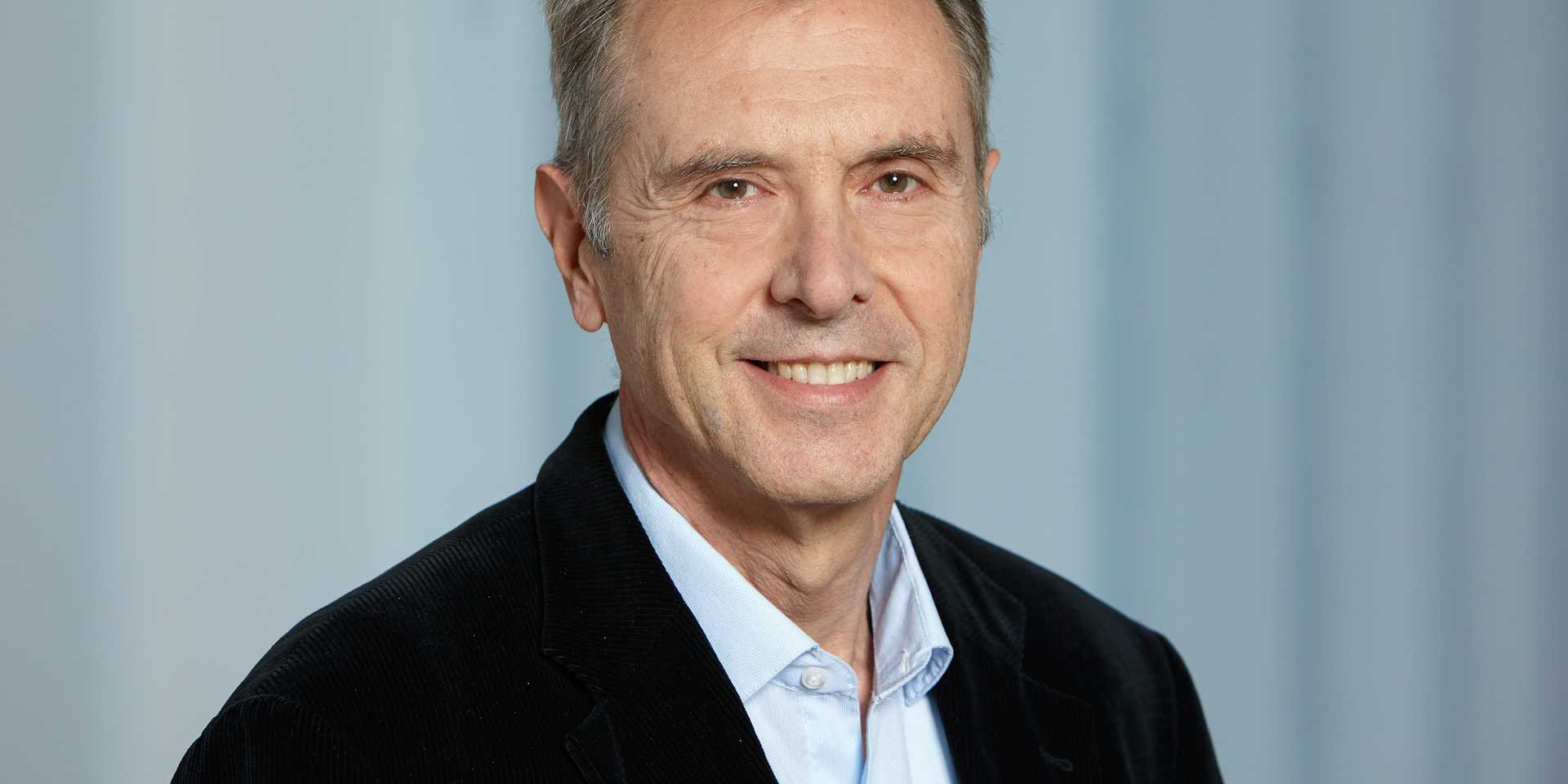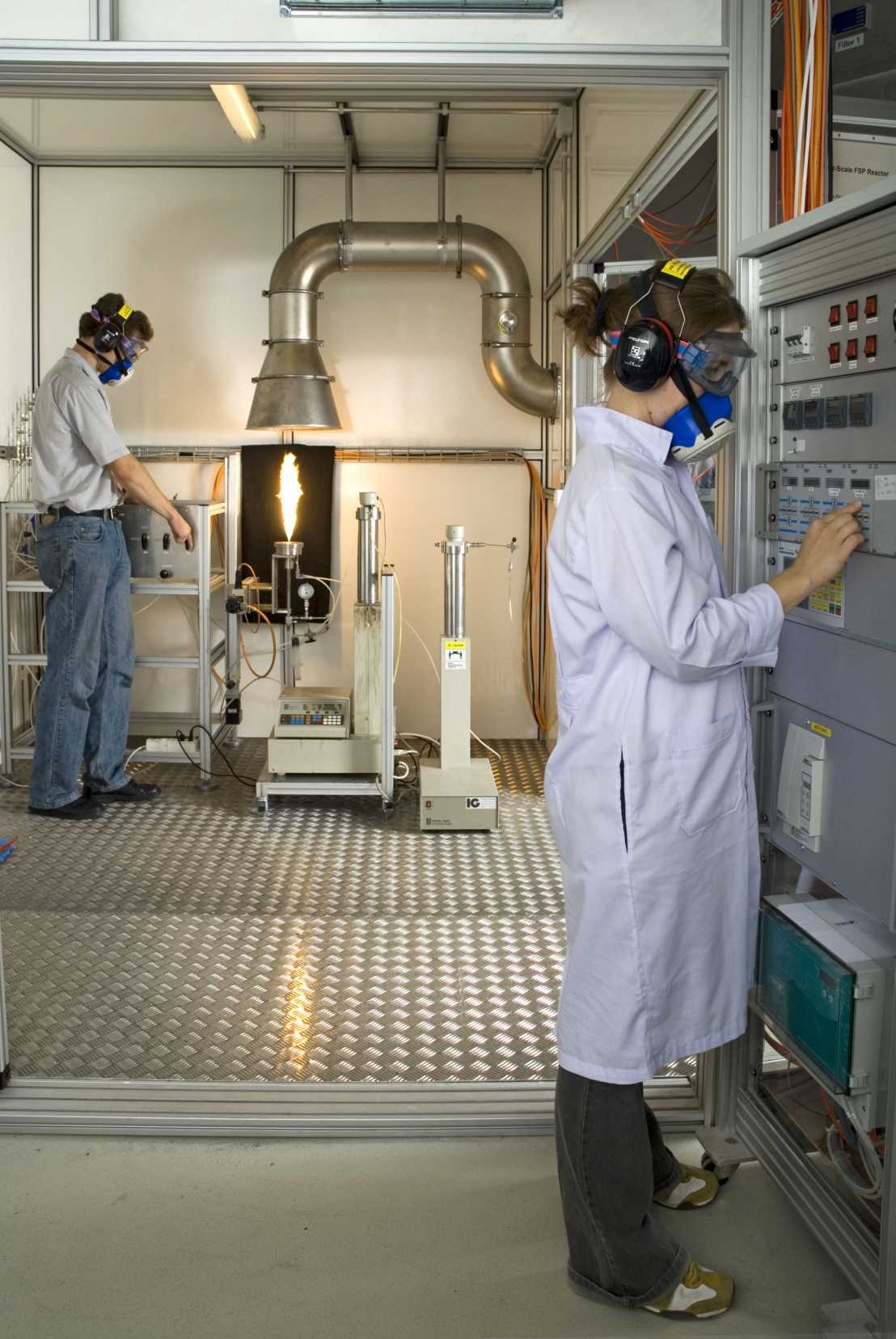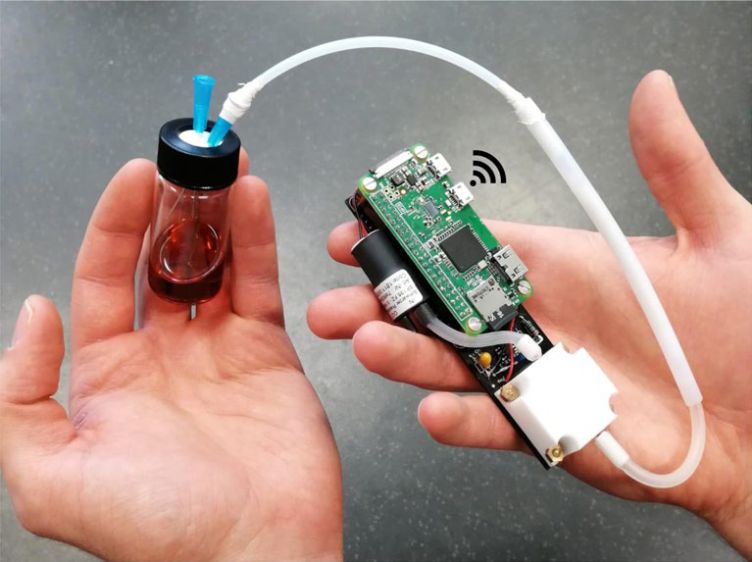Reflecting on his 27 years at D-MAVT, Sotiris Pratsinis recalls his students' successes in nanoparticle research and looks back on his time as department head. As he nears retirement, his essentials for a productive day will remain strong Swiss coffee and a laptop.

Your research combines various disciplines such as chemical engineering, metallurgy, chemistry, nanotechnology and, most commonly, physics. What are the advantages of such an interdisciplinary approach?
Sotiris Pratsinis: Particles are everywhere: in the air we inhale, in the bread, salt and pepper on the dinner table, in our dental fillings, in every pill we take, in the tires we drive on, in the cement we build our houses with, the paint on the walls, and so on … you name it. Particles make “the” difference in many areas of human life and well-being. Therefore, numerous scientific disciplines are needed for advancing their fundamentals and, most importantly, their processing, which is exactly the focus of our laboratory.
Will your research topic become even more interdisciplinary in the future?
Yes, indeed. To better understand small particle behavior, we will need concepts, models, and tools from various disciplines such as the ones you just mentioned above and many more. In particular, our new focus on the dynamics of tiny aerosol nanoparticles, bordering on the size of gas molecules, leads us into a terra incognita with respect to their manufacturing. An interdisciplinary approach is the only way to gain a deep and functional understanding.

You have decisively advanced the technology of flame spray pyrolysis (FSP) for the production of nanoparticles. In which area does this technology promise the most important advances?
In life sciences, we are already seeing the impact of FSP, with professorships on four continents and several spin-offs by our own students and many others. FSP is also used creatively in fields we originally did not think of such as high entropy materials or water electrolysers.
What other achievements are you particularly proud of?
First and foremost, I am proud of my students! Let me give you an example: More than 40% of my doctoral students received the ETH Silver Medal, which is awarded annually to the top 8% of all ETH graduates.
Regarding specific achievements, they developed the first nanoparticle production facility at an academic institution with a production capacity of kg/h – a world record also in production capacity that still holds today. This proved that FSP can be used to synthesize a variety of material compositions and has established itself as a manufacturing technology.
A few more examples: In 2016, the United States National Institute of Health launched a five-year program at the Harvard School of Public Health to better understand the toxicity of inorganic nanoparticles that could be made consistently by FSP. In 2017, the German Science Foundation (DFG) named FSP a priority technology and initiated a six-year program that funded 29 doctoral students across Germany to deepen the fundamentals of this technology.
Secondly, I am delighted with the careers of my students after they left our lab. About a dozen of them have taken up professorships on four continents, while others hold leading positions in industry worldwide and especially in Switzerland with companies like Novartis, Nestle, IBM, Bühler, and Gericke. Worth mentioning is that one of these professors has founded at least 12 spin-offs here at ETH Zurich.
Thirdly, I am proud of the incredible success of spin-offs from our own lab – a success that is almost unique in the Swiss landscape. For example, one of them is external page HeiQ, the first ETH spin-off ever to go public on the London Stock Exchange in December 2020, while the most recent spin-off, external page Alivion, has already sold its devices in at least 26 countries since it started sales in September of 2022. HeiQ is developing chemical formulae that help to make textiles for example antistatic, water-repellent or odor-free, while Alivion develops breath analyzers detecting methanol.

Before you came to ETH Zurich in 1998, you worked for many years at the University of Cincinnati. What motivated you to come to ETH back then?
After a sabbatical in Europe at the universities in Delft and Karlsruhe, I was asked to apply here. During the process, I was impressed by the high quality of students and excellent research infrastructure of ETH. Despite having a very successful career in the US with a number of NSF and industrial grants, I decided to come to ETH Zurich, which also brought me closer to my aging family in Greece.
Have your expectations of ETH Zurich and Switzerland been fulfilled?
Far more and beyond what I could have ever dreamed. I am still most impressed by a) the quality and pride of ETH students, b) the unwritten “no-lab-boundaries” policy of ETH professors, and c) the infrastructure (material and people) of ETH. Honestly, ETH is the best university in the world – a judgment I can make with certainty after visiting more than 150 universities worldwide. We should do more to spread the word so ETH ranks first on every list.
What moment in your 27 years at D-MAVT will stay with you forever?
My time as head of D-MAVT was most memorable as I had to manage not only my most demanding research program plus teaching, but also the well-being of more than 2,000 students with just six assistants.
The support from colleagues and the ETH Executive Board was extremely valuable and motivating. I must admit, only then did I really understand how ETH functions! I will never forget the founding of the Industrial Advisory Board (IAB), which consists of executives from the leading local and international industries active in Switzerland and promotes our department’s interactions with industry and the public. The IAB plays a crucial role in raising awareness among ETH Zurich’s Executive Board and Swiss lawmakers about the importance and critical impact of our department on Swiss industry for more than 17 years.
What will you miss most after your retirement?
My team and my students, of course, as well as the collegial atmosphere at D-MAVT. They have provided an unprecedented environment where teaching while researching (or vice versa) was fun and full of creative ideas, making you forget that time was flying.
What are your next plans?
For as long as I have good health, I would love to continue my research and help with raising my grandchildren.
What should not be missing from your desk in the future?
Surely the strong Swiss coffee and my laptop.
About
Prof. Dr. Sotiris Pratsinis (69)
Professor of Process Engineering & Materials Science
Particle Technology Laboratory (PTL)
At D-MAVT from 1998-2025